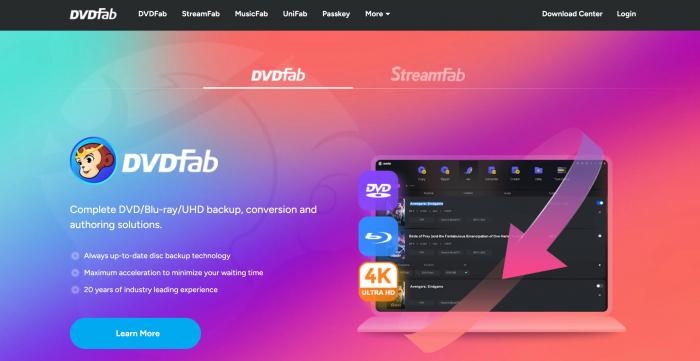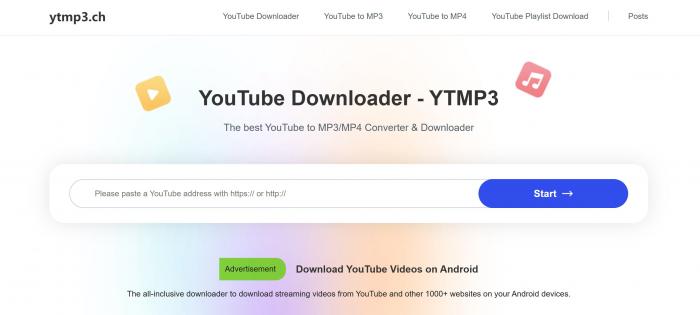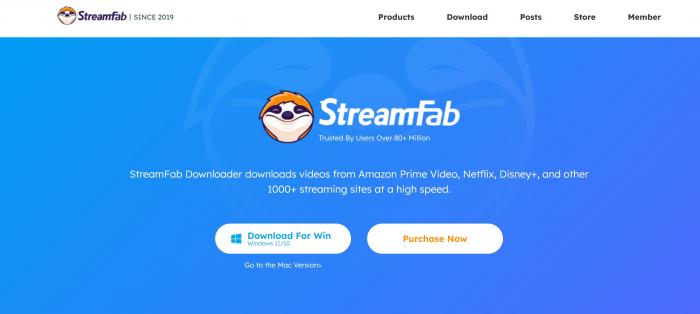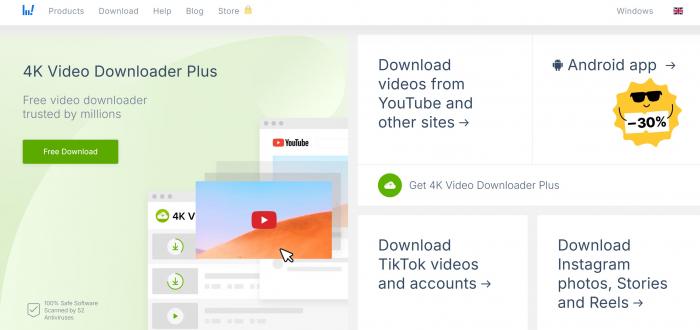
Table of Contents
In 2025, video format selection remains a persistent challenge for content creators, streaming users, and casual viewers alike. As two dominant formats, MKV and MP4 each hold unique strengths and specialized use cases. MKV stands out with its open-source flexibility and technical sophistication, while MP4 maintains its 'Swiss Army knife' status through universal compatibility. Why haven't they replaced each other? The answer lies in their technical DNA and practical applications. For instance, MKV supports multi-track subtitles and 12-bit HDR color depth features cherished by cinephiles, whereas MP4's mobile-first optimization cements its dominance in the streaming market.
This guide will dissect both formats across 5 critical dimensions, mapping their capabilities to specific user scenarios. To simplify your workflow, I'll also share personally tested download software recommendations that excel in handling these formats, complete with performance benchmarks from real-world usage.
MKV or MP4? How to Choose the Right Format for Your Needs
Basic Concepts
MKV
- Full Name: Matroska Video
- Origin: Open-source container format developed by Russian programmers (2002).
- Analogy: A "universal toolbox" for storing videos, multi-language audio tracks, subtitles, chapter menus, and more.
MP4
- Full Name: MPEG-4 Part 14
- Origin: Industry-standard format regulated by international organizations.
- Analogy: A "compact backpack" optimized for portability and device compatibility.
Comparison Table
|
Feature |
MKV (Matroska) |
MP4 (MPEG-4 Part 14) |
|
Core Purpose |
Advanced media container |
Universal streaming container |
|
File Structure |
Multiple video/audio tracks, subtitles, chapters, metadata |
Single video + audio track; embedded subtitles (limited) |
|
Video Codecs |
H.264, H.265, AV1, VP9, VC-1 (open standards) |
H.264, H.265 (device-dependent) |
|
Audio Codecs |
FLAC, DTS-HD, lossless formats, multi-channel |
AAC, MP3 (lossy compression) |
|
Device Compatibility |
Requires third-party apps (VLC/PotPlayer) |
Native support across devices (phones, tablets, smart TVs, car systems) |
|
File Size |
Larger (20%-50%+ vs. MP4) |
Compact (H.265 optimized) |
|
Quality Retention |
Lossless packaging (e.g., direct Blu-ray backups) |
Compression artifacts (degrades with edits) |
|
Advanced Features |
Chapter navigation |
DRM protection |
Use Case Recommendations
Choose MKV When:
- Archiving HD movies (e.g., Blu-ray rips, 4K files) with multi-language tracks.
- Creating educational/dubbed content (documentaries, language tutorials)
- Professional editing workflows to avoid quality loss from re-encoding.
Choose MP4 When:
- Sharing on social media.
- Playing videos on phones/tablets (saves storage and reduces buffering).
- Streaming online (YouTube, Netflix compatibility).
Remember the golden rule: ‘Archive with MKV, share with MP4’—but your ultimate choice depends on your creative mission. Now that you’ve mastered both formats, the next question is: How do I actually download videos in these formats? Whether you’re crafting TikTok-ready MP4 clips or grabbing Netflix shows in MKV for your personal library, these 5 tools I’m about to reveal will become your new digital Swiss Army knife.
End Format FOMO: 5 Smart Tools to Download MKV & MP4 Like a Pro
To help you quickly identify the best tool for your needs, I've compiled a detailed comparison chart of these 5 software options. If you're looking for instant recommendations, scan the table below for key specs at a glance. For those wanting deeper insights, I'll also provide an in-depth analysis of each tool's capabilities, hidden features, and real-world performance benchmarks.
Comparison Table
|
Tool Name |
|||||
|
Core Function |
Lossless Blu-ray/UHD Disc Backup |
All-in-One Media Processor (Streaming+Disc) |
Web-to-MP4/MP3 Converter |
DRM Removal for Streaming |
Social Media Bulk Downloader |
|
Input Sources |
Blu-ray/DVD discs, ISO images |
Blu-ray/Streaming (Netflix etc.) |
YouTube/Vimeo/SoundCloud links |
Netflix/Disney+/Hulu etc. |
YouTube/Bilibili/Douyin & 60+ platforms |
|
Output Formats |
MKV (Lossless) |
MKV/MP4/M2TS |
MP4/MP3 |
MP4 (with subtitles) |
MP4/WebM/MKV |
|
Video Codecs |
H.264/H.265/VC-1 (Direct Copy) |
H.264/H.265 (CRF adjustable) |
Up to 1080p H.264 |
1080p H.264 (Netflix) |
8K/60fps VP9/AV1 |
|
Audio Codecs |
Dolby TrueHD Atmos, DTS-HD MA |
DTS:X→AAC Adaptive Compression |
AAC/MP3 (up to 320kbps) |
E-AC-3→AAC 2.0 |
Opus/AAC (up to 512kbps) |
|
OS Compatibility |
Windows/macOS/Linux |
Windows (Limited macOS support) |
All browsers (cross-platform) |
Windows/macOS |
Windows/macOS/Ubuntu |
|
Pricing Model |
Free Forever (Beta Key Updates) |
Subscription: 39.9/moor249/yr |
Free (ads)/$4.99 monthly ad-free |
$199.9 Lifetime (per platform) |
Free (speed-limited)/$15.6 monthly |
|
Key Tech Edge |
Bad Sector Recovery |
Cinavia Anti-Jamming Tech |
10-Second Instant Parsing |
Chrome Spoofing to Bypass Device Limits |
Built-in SOCKS5 Proxy |
|
Ideal Use Cases |
Movie Archiving/Disc Recovery |
Studio-Grade Format Conversion |
Quick BGM Extraction |
Geo-Restricted Content Backup |
Content Creator Competitor Analysis |
|
Pro Tips |
Requires LibreDrive for UHD |
Disable Hardware Acceleration |
Use IDM for Stable Downloads |
Regular Updates for M3U8 Encryption |
Import Cookies for Member Content |
1. Makemkv

Key Features:
- Directly rips Blu-ray discs to MKV with 1:1 accuracy (preserves HDR/Dolby Atmos metadata)
- Automatically extracts original chapter structures & multi-language subtitles
- Permanent free beta version available (requires periodic decryption key updates)
Pros:
Completely free (permanent beta key available)
Preserves advanced formats like HDR and Dolby Atmos
Automatically repairs disc read errors
Cons:
Only supports physical discs/ISO images (no streaming downloads)
2. DVDfab

Key Features:
- Downloads streaming content as MKV/MP4 (supports Netflix 1080P)
- Proprietary Cinavia watermark removal technology for Blu-ray audio
- Batch conversion with 300+ device presets (including iPad Pro M4-optimized parameters)
Pros:
- Exclusive Cinavia watermark removal (fixes Blu-ray audio muting)
- Batch converts for 300+ devices (e.g., iPad Pro M4 presets)
- Downloads Netflix content in 1080P
Cons:
Expensive subscription model
3. ytmp3

Key Features:
- Browser-based YouTube→MP4/MP3 conversion (no installation required)
- 10-minute rapid processing (1080P videos bypass queue)
- Basic audio parameter adjustment (128kbps-320kbps bitrate)
Pros:
- 10-second instant conversion (for 1080P videos)
- Free basic functionality (ideal for temporary needs)
- MP3 audio extraction support
Cons:
No 4K/high-bitrate downloads
4. StreamFab

Key Features:
- Breaks DRM protection on Netflix/Disney+/Hulu (downloads MP4 with subtitles)
- Intelligent segmented downloading bypasses bandwidth monitoring
- Nighttime batch mode (3× speed during off-peak hours)
Pros:
- Supports Netflix/Disney+/Hulu and other major platforms
- Smart segmented downloads bypass bandwidth monitoring
- Region-free offline viewing
Cons:
199.9lifetimefeeperplatform(449.9 for full bundle)
5. 4K Video Downloader

Key Features:
- 4K MP4 downloads from 50+ platforms (YouTube/TikTok/Bilibili etc.)
- One-click playlist grabbing (preserves thumbnails & descriptions)
- Built-in proxy mode bypasses school/corporate network blocks
Pros:
- One-click downloads from 60+ platforms (YouTube/Bilibili/TikTok etc.)
- 8K resolution + proxy mode (bypasses network blocks)
- Preserves video metadata (thumbnails/descriptions)
Cons:
Free version has speed limits + 10-subscription cap
Final Verdict: Your Format, Your Rules
The MKV vs MP4 debate isn’t about which format is "better"—it’s about matching your creative DNA to the right container. MKV remains the undisputed king for archivists and polyglot media projects, while MP4 continues to dominate the mobile-first, instant-sharing era.
As 8K streaming and VR content reshape digital landscapes in 2025, your choice today will define how future-proof your media library becomes. Remember:
- MKV = Maximum control (codecs, metadata, quality) – Minimum convenience
- MP4 = Maximum compatibility (devices, platforms, speed) – Minimum customization
Ready to level up? Power through your video projects by integrating our recommended download tools like Makemkv, DVDfab, and Keepvid—to engineer your bulletproof automated workflow today!
